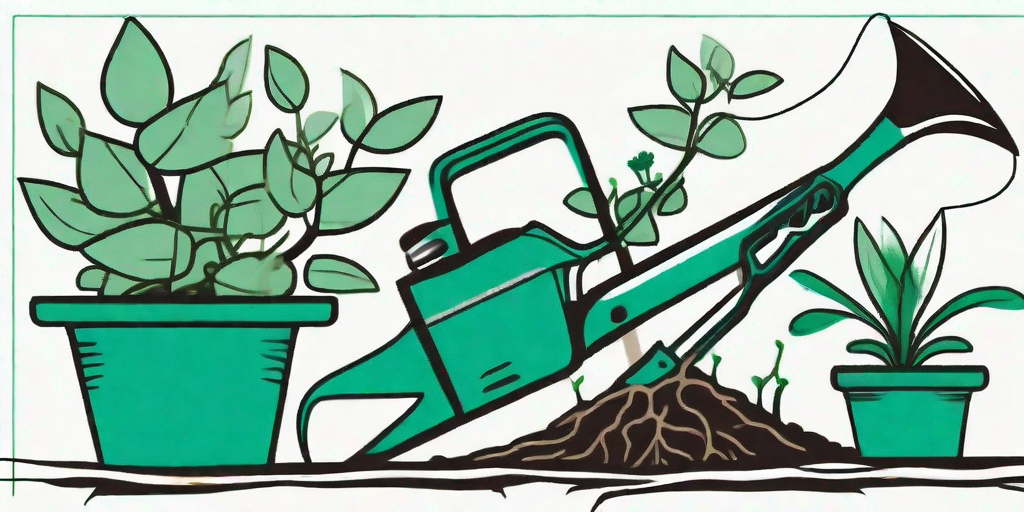
Trumpet vine, also known as Campsis radicans, is a fast-growing perennial vine that can quickly take over your garden if not properly managed. While its bright orange flowers can be quite attractive, its aggressive growth habit can be a nightmare for gardeners. But fear not, dear reader, as we are about to embark on a journey of vine eradication that will leave your garden trumpet vine-free and your green thumb feeling mightier than ever.
Understanding the Trumpet Vine
Before we dive into the nitty-gritty of vine demolition, it's important to understand our adversary. The trumpet vine is native to the southeastern United States and thrives in USDA hardiness zones 4 through 9. It's a sun-loving plant that can grow up to 40 feet tall and spread just as wide. Its roots can extend deep into the ground, making it quite resilient and difficult to eradicate.
Trumpet vines are also known for their ability to cling to almost any surface, thanks to their aerial rootlets. These little suckers (pun intended) can attach themselves to walls, fences, and even other plants, often smothering them in the process. Now that we've got a grasp on what we're dealing with, let's move on to the fun part: getting rid of it.
Step-by-Step Guide to Eradicating Trumpet Vine
Step 1: Suit Up
First things first, you'll want to suit up. While the trumpet vine isn't poisonous, it can cause skin irritation in some people. So, grab your gardening gloves, long-sleeved shirt, and a pair of sturdy pants. It's time to get down and dirty with your garden nemesis.
Also, don't forget your safety glasses. You never know when a rogue vine might try to poke you in the eye. It's always better to be safe than sorry.
Step 2: Cut Back the Vine
Next, you'll want to cut back the vine as much as possible. Using a pair of sharp pruning shears, cut the vine back to about a foot above the ground. This will make it easier to dig up the roots later on.
Be sure to dispose of the cuttings properly. Trumpet vine can propagate from cuttings, so you don't want to accidentally spread it to other parts of your garden.
Step 3: Dig Up the Roots
Now comes the hard part: digging up the roots. As mentioned earlier, trumpet vine has a deep root system, so you'll need to dig deep to get them all. Use a garden fork or a shovel to dig around the base of the plant and pry up the roots.
Keep in mind that any roots left in the ground can potentially sprout new plants, so try to be thorough. It might take a few tries to get them all, but don't give up. Persistence is key when dealing with stubborn plants like the trumpet vine.
Post-Eradication Care
Once you've successfully eradicated the trumpet vine, it's important to keep an eye on the area for any new growth. If you see any new shoots popping up, pull them up immediately. Don't give the trumpet vine a chance to reclaim its territory.
Consider planting something else in the area to prevent the trumpet vine from coming back. Choose a plant that's native to your area and well-suited to the conditions in your garden. This will help to keep your garden healthy and diverse, and hopefully, trumpet vine-free.
Frequently Asked Questions
Can I use herbicides to kill trumpet vine?
Yes, you can use herbicides to kill trumpet vine, but they should be used as a last resort. Herbicides can harm other plants and beneficial insects, so it's best to try manual removal first. If you do decide to use a herbicide, make sure to follow the instructions on the label carefully.
Can I compost trumpet vine cuttings?
It's best not to compost trumpet vine cuttings, as they can potentially sprout new plants. Instead, dispose of them in your green waste bin or take them to a local garden waste recycling center.
Why is my trumpet vine not flowering?
Trumpet vine needs plenty of sun to flower, so if your vine isn't blooming, it might not be getting enough light. It could also be due to a lack of nutrients. Try fertilizing your vine with a balanced fertilizer to give it a boost.
Conclusion
While the trumpet vine can be a tough adversary, with a bit of elbow grease and persistence, you can reclaim your garden from its clutches. Remember, the key to successful trumpet vine eradication is early detection and swift action. So, keep an eye on your garden and don't let the trumpet vine catch you off guard.
Now, go forth and conquer your garden. The trumpet vine doesn't stand a chance against your newfound knowledge and determination. Happy gardening!















